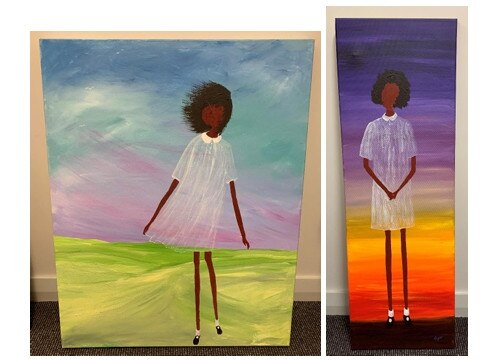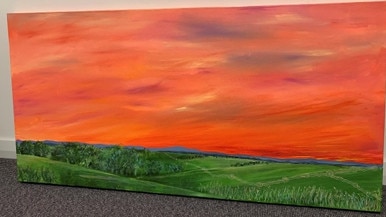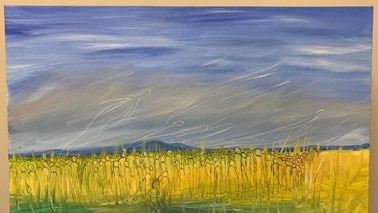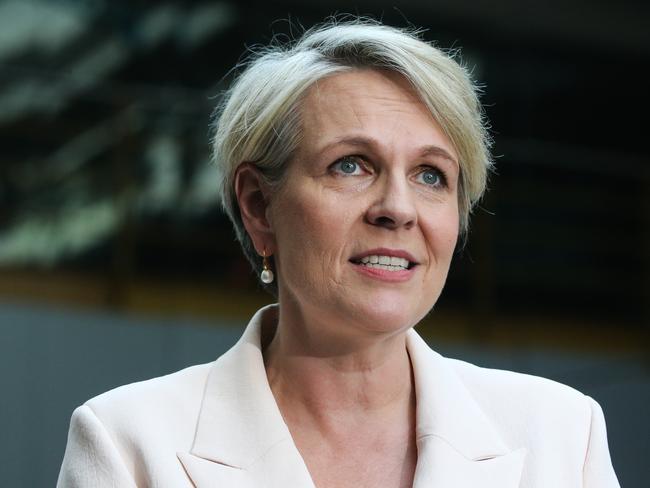Revealed: The paintings an Indigenous artist used to try to block gold mine
Indigenous artist Nyree Reynolds, whose application led to a gold mine in Blayney being put on ice, submitted her own paintings as evidence the mine should be blocked.
NSW
Don't miss out on the headlines from NSW. Followed categories will be added to My News.
Environment Minister Tanya Plibersek moved to block a $1 billion gold mine after Indigenous artist Nyree Reynolds used a series of her own paintings to argue the project should be scrapped.
The paintings that led to the McPhillamys gold mine being vetoed can finally be revealed, despite the Minister refusing to release the evidence she relied upon when slapping an Indigenous heritage protection order on the project.
The Daily Telegraph can reveal that Indigenous artist Ms Reynolds made a series of submissions to the NSW government opposing the project, based on her own paintings.
The Telegraph understands that the paintings also formed the thrust of an application to the federal government which led to Ms Plibersek making a heritage protection declaration for the Belubula river in August.
“My paintings are all based on this beautiful part of Wiradjuri Country. I can’t bear to think of the desecration of this land and it’s ancient heritage if the McPhiilamy (sic) proposal were to go ahead,” Ms Reynolds said in one submission.

One painting she submitted as part of the “statement of significance” pictured above “proud Wiradjuri girl walking through the Blayney landscape”.
Ms Reynolds said the subject of her painting “is proud about the proposal to potentially destroy her Country”.
She used another painting to argue that the “Bilabula” (Belubula) river should be protected.
“The Bilabula (sic) is like an artery through our land as shown by this painting I did to be permanently displayed in Blayney Hospital.”

“The river is the life blood to animals along the way and to the people who grow food and use it for recreation. This river sustains life. It will not sustain life if the headwaters are poisoned, and that is not acceptable in any sense of fairness.”
Ms Reynolds also used her artworks to argue that the area targeted for the McPhillamys gold mine tailing dam needed to be protected, in a hearing of the NSW Independent Planning Commission (IPC)
According to a transcript of the IPC meeting, Ms Reynolds referred to a “billboard” she had been asked to paint by the local council.

“It’s a very, very significant area … I hope this stays the same as the billboard.”
“When we put the first billboard up, I felt the ancestors, it was just
beautiful. Now, I can see that they’re leaving, the spirits are leaving,” she said.
Wiradjuri traditional owner and former chair of NSW Aboriginal Land Council Roy Ah-See said it was “really concerning” that paintings from one artist were considered in blocking the mine.

“Anyone can go out and paint a picture, what precedent is she setting?” he said.
“Industry should be really, really concerned, and so should Local Aboriginal Land Councils, he said.
On Friday, Ms Plibersek released a statement of reasons which led to her imposing a protection declaration on a section of the Belubula river, blocking the mine’s tailings dam.
Ms Plibersek overruled the Orange Local Aboriginal Land Council, declaring that they did not have sufficient knowledge to know the land was significant.
Mr Ah-See criticised Ms Plibersek over that decision. Ms Plibersek’s office has previously said Ms Reynolds' submission was “not relied on” in granting protection.
The declaration came after Ms Reynolds and another group lodged an application for the land to get “emergency” protection.
According to Ms Plibersek’s reasons, she determined that state legislation does not adequately protect “intangible” cultural heritage – something the Minns Labor government disputes.
The Telegraph attempted to contact Ms Reynolds through an art gallery with which she is affiliated.
Do you have a story for The Daily Telegraph? Message 0481 056 618 or email tips@dailytelegraph.com.au





